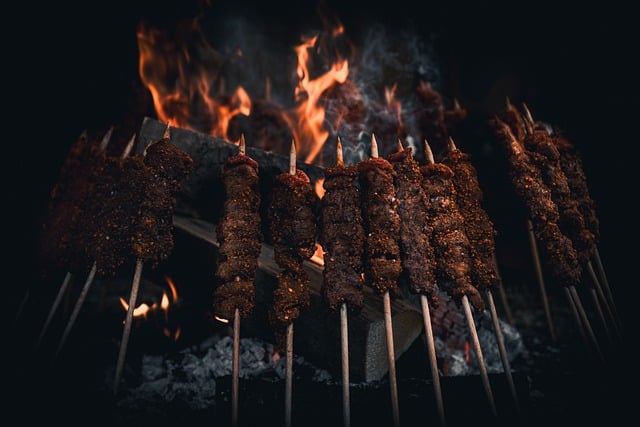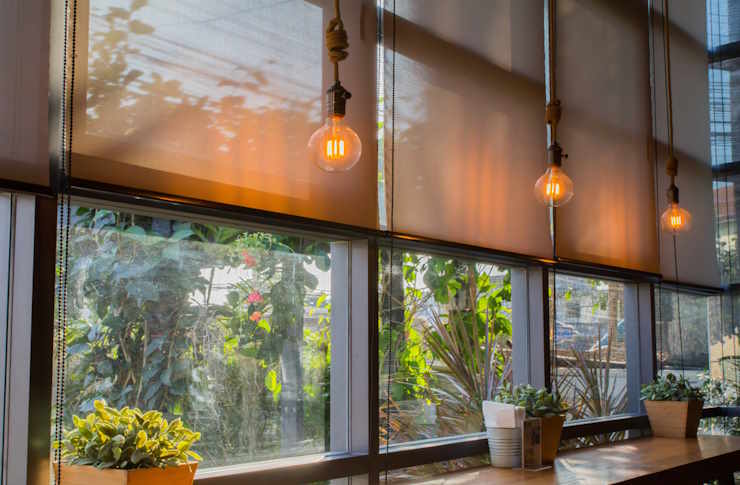Sizzling Sensation: The Art of Flame-Grilled Street Food
Ignite your taste buds with the smoky allure of flame-grilled street food. From sizzling skewers to charred corn on the cob, discover how open-fire cooking transforms simple ingredients into unforgettable culinary experiences. Join us on a global journey through bustling markets and vibrant street corners, where the dance of flames meets culinary craftsmanship.

Flame-grilling imparts a unique flavor profile that can’t be replicated by other cooking methods. The intense heat caramelizes sugars, creates crispy textures, and infuses food with a subtle smokiness. This technique also allows for quick cooking, perfect for street vendors who need to serve hungry customers efficiently. From Turkish kebabs to Mexican elotes, the art of flame-grilling has been perfected by street food artisans across the globe.
Global Grill Masters: Street Food Specialties
Embark on a culinary tour of flame-grilled street food delights from around the world. In Southeast Asia, satay vendors thread marinated meats onto bamboo skewers, grilling them over portable charcoal braziers. The result is a perfect balance of char and succulence, often paired with peanut sauce for dipping. Moving to the Middle East, shawarma masters tend to towering spits of seasoned meat, shaving off crispy, juicy slices to stuff into warm pita bread.
In South America, Argentine parrillas showcase the art of asado, where various cuts of beef are slowly grilled over wood embers. Street-side chefs in Brazil craft churrasco, skewering large pieces of meat and cooking them rotisserie-style over open flames. Across the Atlantic, West African suya stands entice passersby with the scent of spice-rubbed meat grilling over hot coals, served with a fiery peanut-based seasoning.
The Science Behind the Sizzle
Understanding the science of flame-grilling can elevate your appreciation for this cooking technique. When food is exposed to high heat, several chemical reactions occur simultaneously. The Maillard reaction, a complex interaction between amino acids and sugars, creates hundreds of flavor compounds and that characteristic brown crust. Simultaneously, fats render and drip onto the heat source, vaporizing and imparting smoky notes back onto the food.
The type of fuel used in flame-grilling also plays a crucial role in flavor development. Hardwoods like oak, hickory, and mesquite impart distinct aromas, while charcoal provides a clean, intense heat. Some street food vendors even incorporate aromatic herbs or grape vines into their fuel mix for added complexity. The distance between the food and the heat source, as well as the cooking duration, are carefully controlled to achieve the perfect balance of char and doneness.
Equipment and Techniques of Street Grill Masters
Street food vendors have perfected the art of portable flame-grilling setups. From compact charcoal grills to ingenious makeshift contraptions, these mobile kitchens are marvels of efficiency and innovation. In Thailand, satay vendors often use narrow, rectangular grills that allow for high-volume cooking in limited space. Japanese yakitori chefs wield long, narrow grills called konro, ideal for skewered meats and vegetables.
Techniques vary widely depending on the dish and cultural tradition. Some vendors use wire mesh grills for delicate items like seafood or vegetables, while others prefer solid metal grates for achieving perfect grill marks. Basting brushes, made from bundled herbs or traditional materials, are used to apply marinades and oils during cooking, enhancing flavor and preventing sticking. The skilled manipulation of heat zones on the grill allows for precise control over cooking temperatures.
Elevating Home Grilling with Street Food Inspiration
Bring the excitement of flame-grilled street food to your own backyard with these inspired techniques and recipes. Start by experimenting with different fuel sources – try adding wood chips to your charcoal for enhanced smokiness. Invest in a set of long-handled grilling tools and a variety of skewers to recreate global street food classics. Practice controlling heat zones on your grill by creating a two-zone fire, with hot coals on one side for searing and a cooler area for gentle cooking.
Marinades and spice rubs are key to authentic street food flavors. Blend aromatic spices like cumin, coriander, and smoked paprika for a Mexican-inspired rub, or mix lemongrass, garlic, and fish sauce for Southeast Asian flair. Don’t forget the importance of acid in balancing flavors – a squeeze of lime or a tangy yogurt-based sauce can elevate your grilled creations. Finally, consider the entire sensory experience – serve your flame-grilled delights in creative ways that evoke the spirit of street food, like newspaper cones or banana leaf wraps.
Sizzling Tips for Flame-Grilled Perfection
• Soak wooden skewers in water for 30 minutes before use to prevent burning
• Use a chimney starter for even charcoal heating and avoid lighter fluid flavors
• Invest in a good meat thermometer to ensure food safety and optimal doneness
• Clean your grill grates when hot for easier removal of stuck-on food
• Experiment with different woods for smoking, like applewood for pork or mesquite for beef
• Allow meats to rest after grilling to redistribute juices and ensure tenderness
• Keep a spray bottle of water handy to tame flare-ups caused by dripping fats
• Try grilling unexpected items like fruits or lettuce for unique flavor experiences
The art of flame-grilled street food is a testament to the universal appeal of cooking with fire. By embracing the techniques, flavors, and spirit of global street food traditions, we can elevate our own grilling experiences and connect with a rich culinary heritage. Whether you’re savoring smoky skewers from a bustling night market or recreating the magic in your own backyard, the sizzle and aroma of flame-grilled delights are sure to ignite your passion for outdoor cooking.




